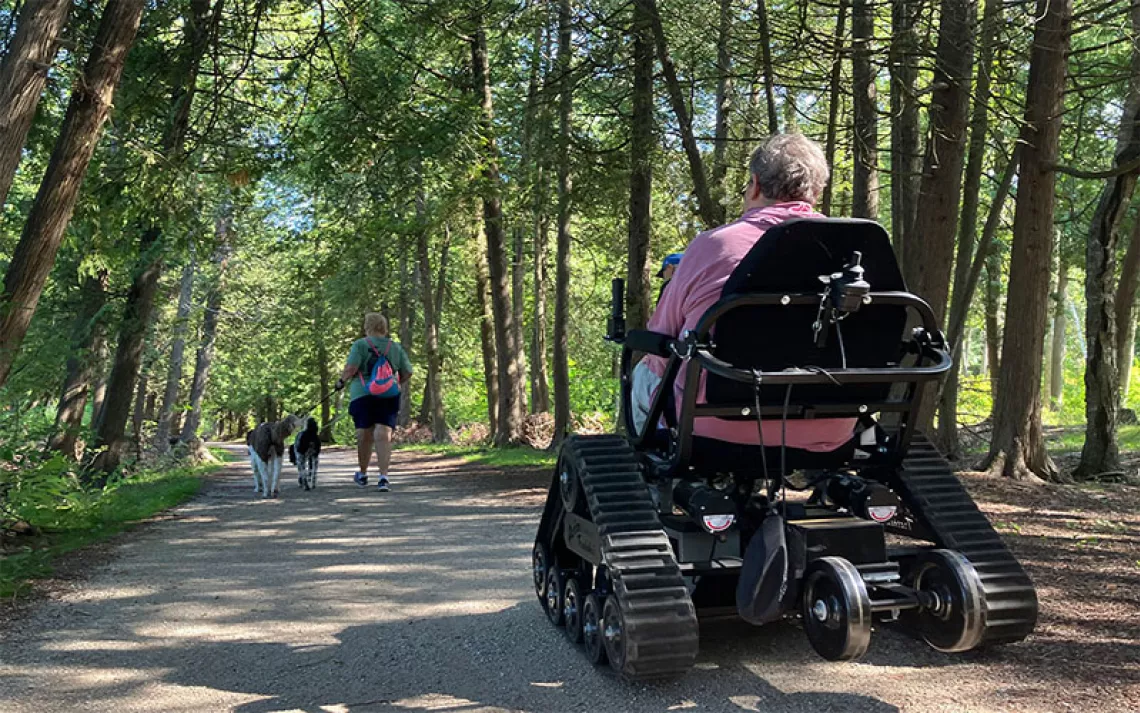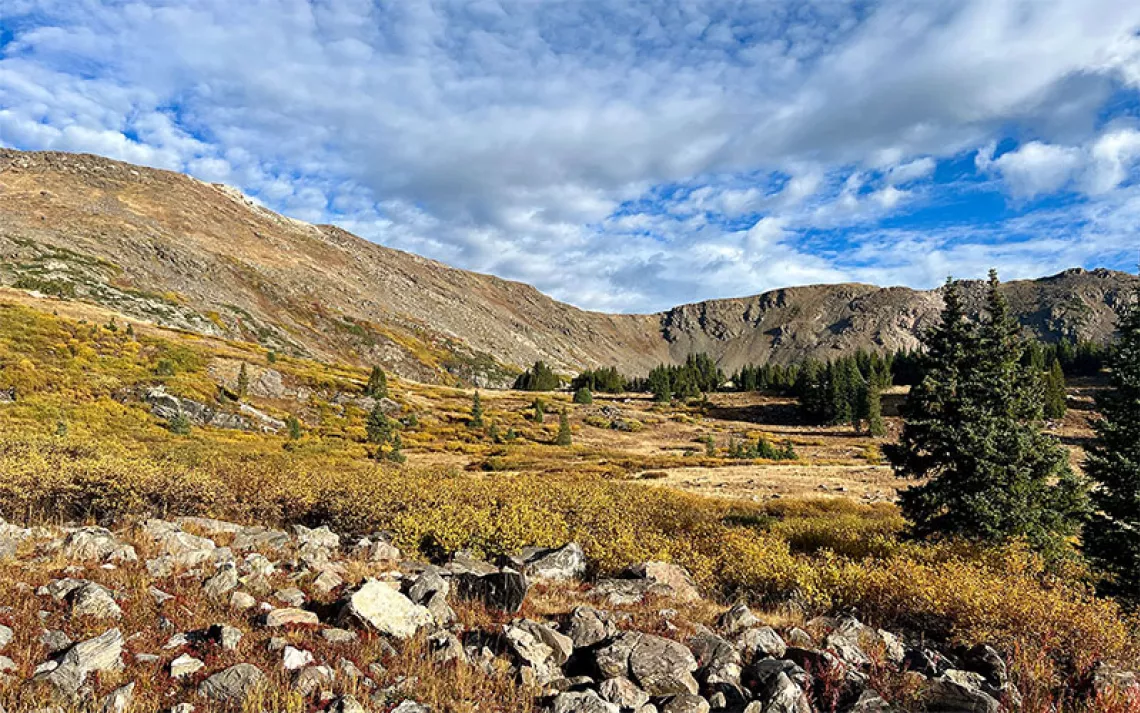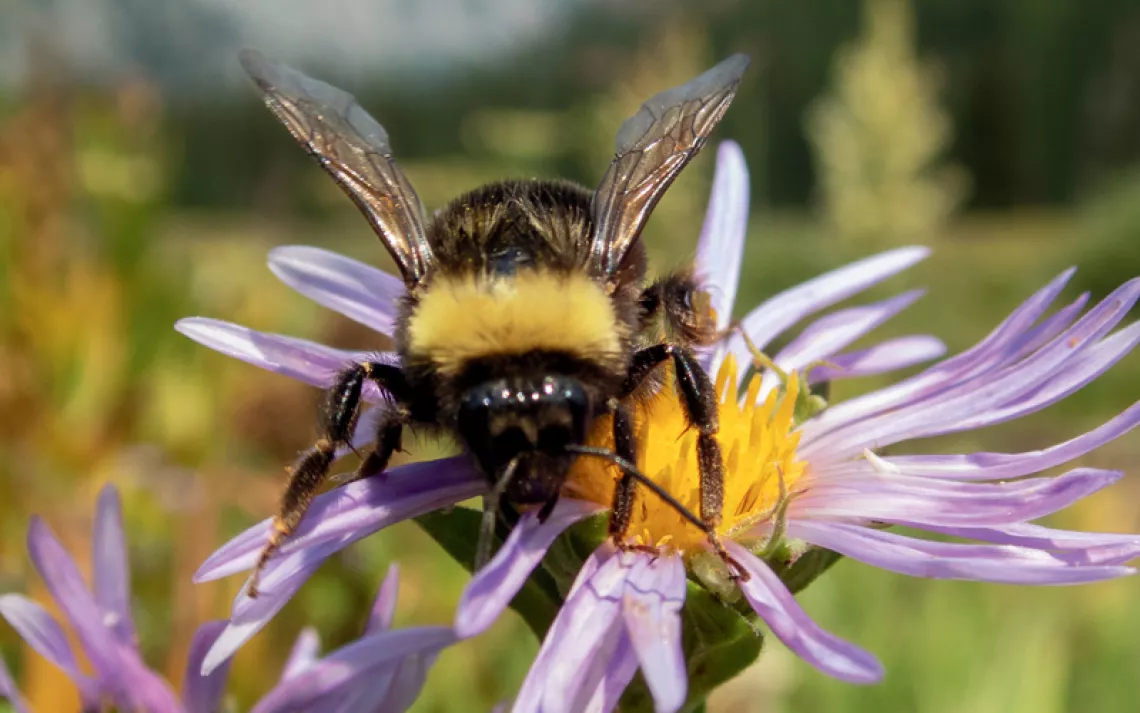The Trail Family Ties That Bind
A backpacker finds a family on New Zealand’s Heaphy Track
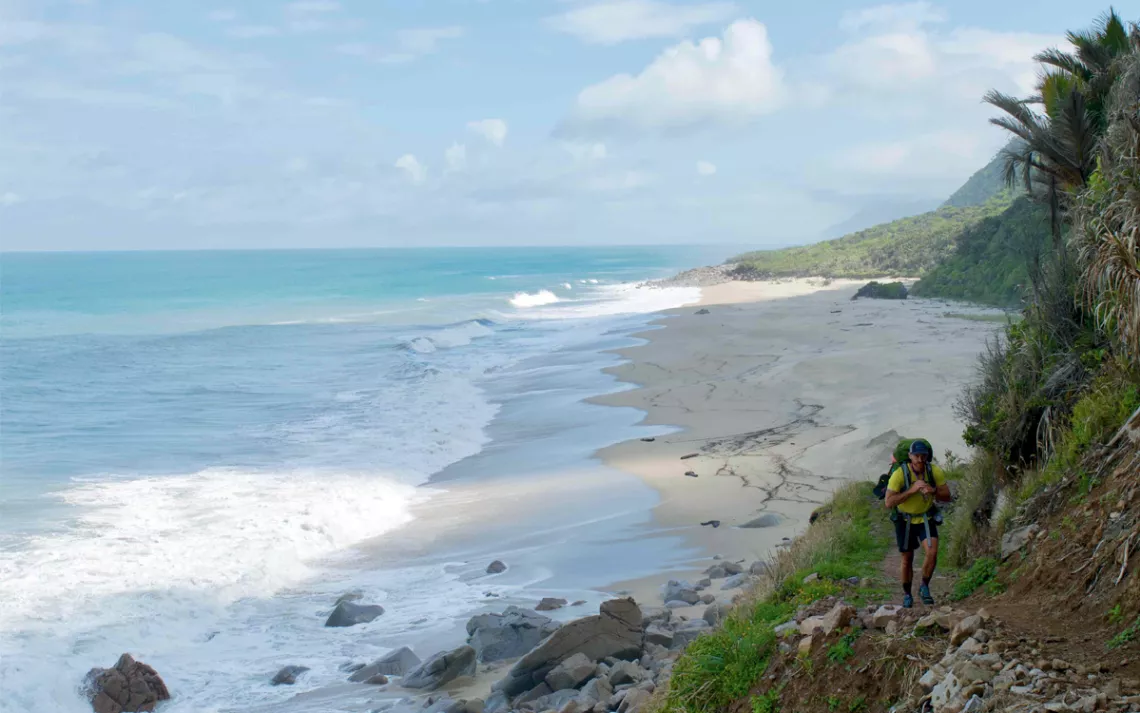
New Zealand's Heaphy Track traces 50 miles of mountainous terrain and coastline on the South Island. | Photo by Ryan MacDonald
Somewhere in the Golden Trout Wilderness, a region of the Sierra Nevada near Lone Pine, California, I had an aha moment. Maybe I was delirious from the altitude, but something certainly shifted. I felt it crystallize.
Another hiker had stopped for lunch near the campsite where I and several hikers with whom I'd barely interacted had pitched our tents. I heard him talking nearby, and his gospel about the Pacific Crest Trail lured me from the cocoon of my tent. Some of his anecdotes rang familiar—the endless preparation, the food packages, the loneliness—but then he revealed something I had never heard.
Thru-hikers along the more-than-2,500-mile journey, he said, relied on one another as if they were links of a single chain. One day complete strangers, the next day best friends, they toasted milestones and celebrated birthdays. In the end, they were a family born on the trail.
"I miss my tramily," he told the group of people circling him and listening as though he were a village elder.
Six months later, while preparing for a backpacking trip to New Zealand's Kahurangi National Park, I recalled that backcountry wise man's words. I have a reputation for being a trail grinch. I'll sing to the rivers and do my dishes with the birds before I learn my trail mates' names. It was time for that to change, I decided while double-checking my packs. Kinship matters in the outdoors.
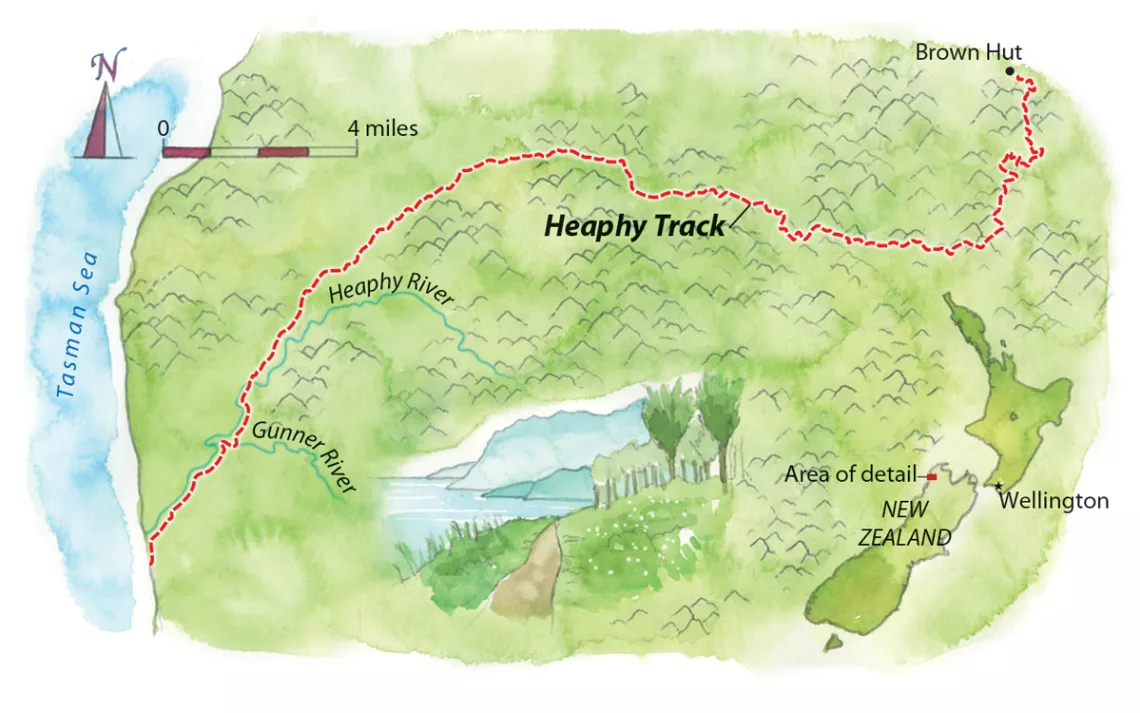
Map by Steve Stankiewicz
The Heaphy Track, one of New Zealand's 10 Great Walks, traces mountainous terrain before dissolving into the remote western coastline of the South Island. There are beaches that spill into walloping seas, drippy rainforests with ferns that grow taller than my six-foot frame, and groves of nikau palms that sprout up along the coast and tower over the trail with their expressive, lifelike fronds. With no natural mammalian predators on the island, endemic birds and creatures such as giant carnivorous snails flourish.
This 50-mile, four-day trek would be the longest I'd ever taken (hiking at least 11 miles per day). Thankfully, I wouldn't be alone: My husband, Richard, and my best friend, Jessie, would be with me, but they wouldn't be the only ones. I'd reserved sleeping huts to lighten our loads. These shelters provide refuge for adventurers and are popular with families. The trip along the Heaphy would be a shared one.
We climbed 2,000 feet on a steep, circular incline to arrive at the Perry Saddle Hut at the end of our first day, just in time for dinner. Following my nose into the kitchen, I discovered a hive of domesticity: Pots were clamoring, mugs were steaming, and exhausted hikers I hadn't met were jammed around tables.
The matriarch of a large family commandeered the stove top in preparation for their beef stir-fry. Over my shoulder, I gazed at this woman as she julienned vegetables and plopped them into a sizzling pan. I sensed an opportunity to lean into the whole meeting-new-people thing, but I clammed up when she began to plate her dishes like a Michelin-rated chef.
"How did they get all those ingredients up here?" I asked Jessie and Richard. We took our measly bean burritos outside and enjoyed the last few moments of sunshine.
The next day, low-hanging clouds shielded the sky as we embarked. Aided by the coolness, we moved quickly and soon were lost in the beauty of Gouland Downs. We hopscotched across rivers on slimy rocks instead of taking the bridges, clenching one another's hands.
When we arrived at the James Mackay Hut, our second shelter, we spotted the mouth of the Heaphy River from our patio. Possibly as early as the 14th century, Maori hunters had settled along the banks where the river streamed down from the mountaintops and fed the Tasman Sea. I had just hunkered down at the communal kitchen table when a chatty seven-year-old with thick bottle-cap glasses found a spot next to me.
"I'm Elsa," she said with an endearing lisp. Nearby, her parents threw me a look that signaled, "If you want her to leave, just let us know." But her perky personality was welcome entertainment after being on the trail for eight hours.
Her older siblings joined our informal happy hour, and together they quizzed me with an arsenal of riddles. When she grew tired of my not knowing the answers, Elsa pivoted to something we could talk about: television.
"Do you watch Queer Eye?" Elsa asked me. Unsure if this was a trick question, I cautiously responded yes.
Without missing a beat, Elsa declared, "You remind me of the one with the long hair."
Elsa's read caught me by surprise. Though I share his passion for women's figure skating and gymnastics, I never would have identified as "the Jonathan." My shaved head can't compete with his signature locks. And I don't exude an ounce of his charisma.
I realized Elsa saw someone in me that I didn't: someone friendly, patient, and kind. Someone I wanted to bring on this trip.
The following morning, I waved goodbye to Elsa and her family, knowing our paths might never cross again. I'm optimistic, though, that my memory of her will never fade.
As the grizzled PCT veteran had told me, your tramily is forever.
This article appeared in the March/April 2020 edition with the headline "Family Ties."
Take a Sierra Club trip to New Zealand. For details, see sc.org/adventure-travel.
WHERE
Heaphy Track, Kahurangi National Park, New Zealand's South Island
GETTING THERE
Fly to Christchurch International Airport and drive (or fly) to Nelson, where there are connecting bus and shuttle services that can take you the 100 miles to the trailhead near Brown Hut. The Heaphy Track is a one-way hike, so you'll need to arrange shuttle services for when you exit the trail.
WHEN TO VISIT
Summer is December through February and brings the most predictable weather. Mountain bikers can use the trail May through November.
PERMITS
The Department of Conservation doesn't require permits for day hikes or thru-hikes, but reservations for backcountry huts and campsites are necessary (up to six months in advance) if you plan to sleep on the trail.
MUST-SEE
Birdlife on the South Island is the main draw. Search for the flightless takahe, with its unmistakable blue plumage. The small pīwakawaka, or fantail, is more common and may follow you around like Jiminy Cricket.
SURVIVAL TIP
Sand flies can be vicious! Your skin will itch and burn long after they bite. Cover all areas of your body when hiking along the coastline.
REQUIRED READING
With colorful illustrations and in-depth histories, Birdstories: A History of the Birds of New Zealand by Geoff Norman provides context and pointers to raise your birding game.
 The Magazine of The Sierra Club
The Magazine of The Sierra Club
